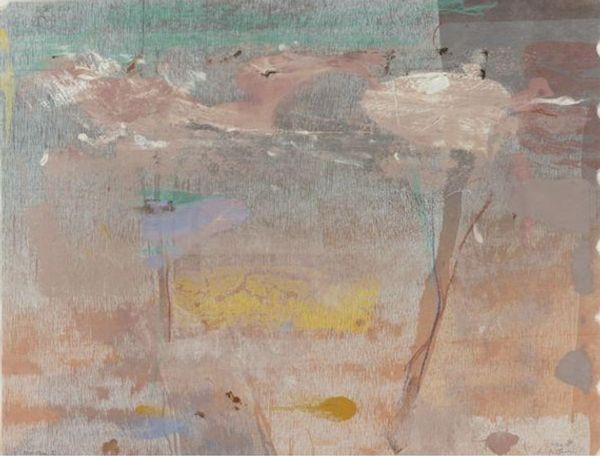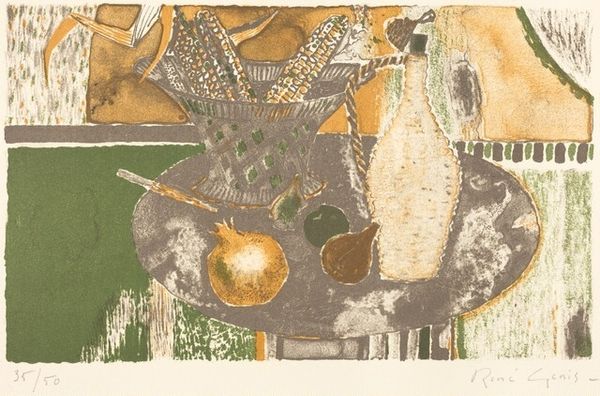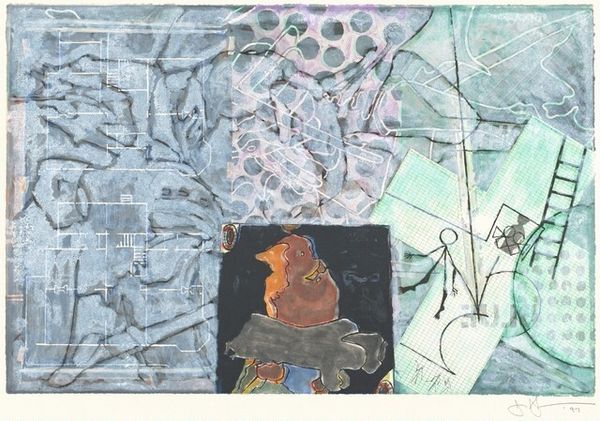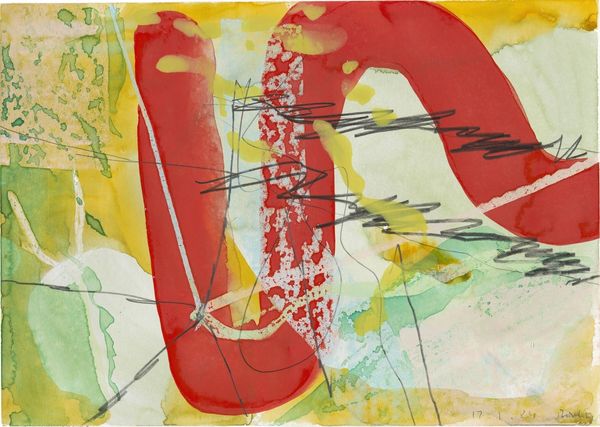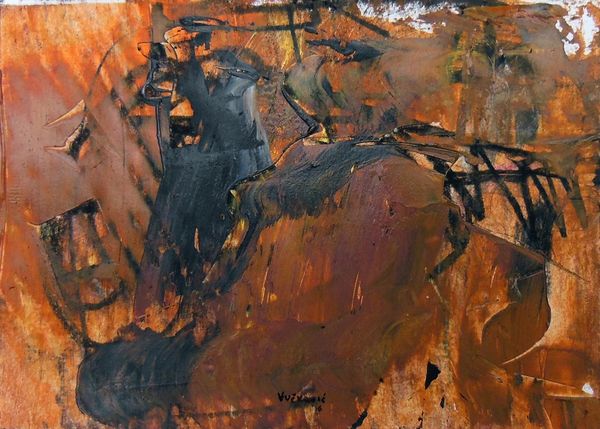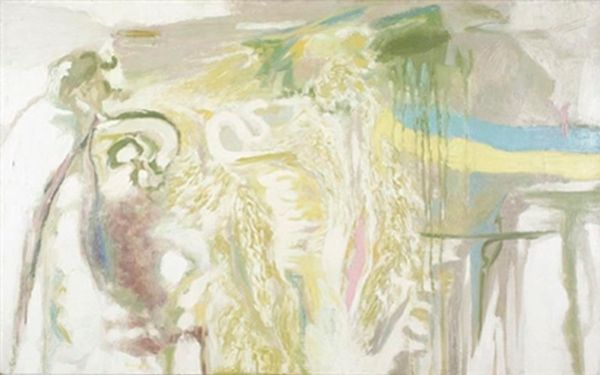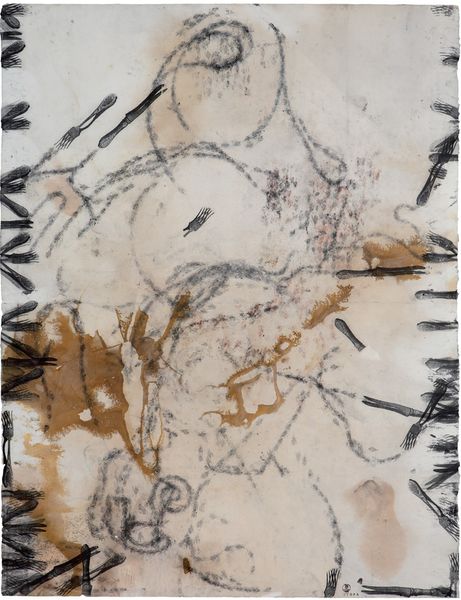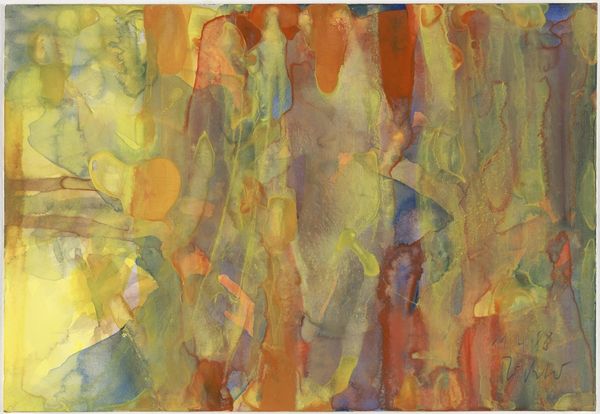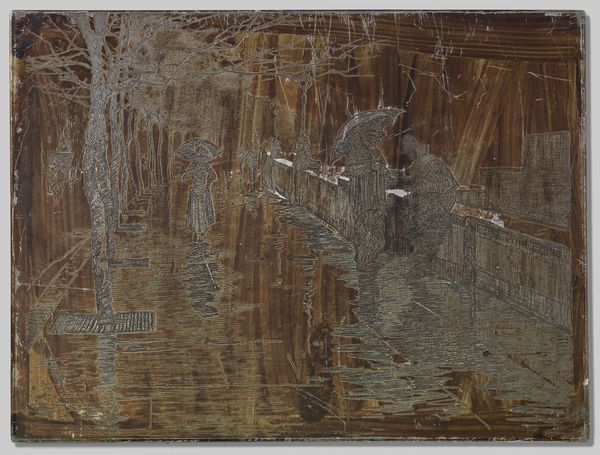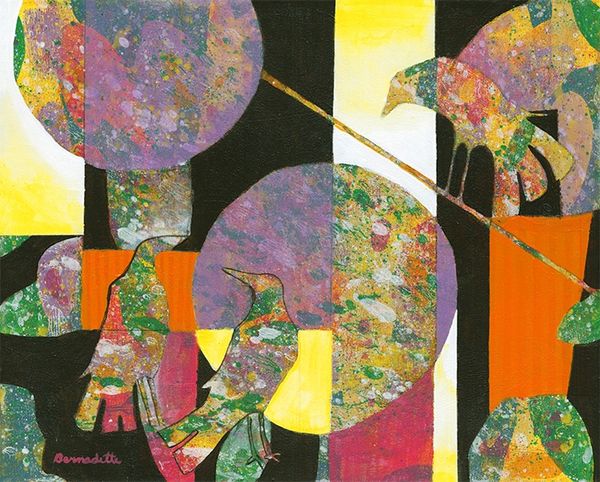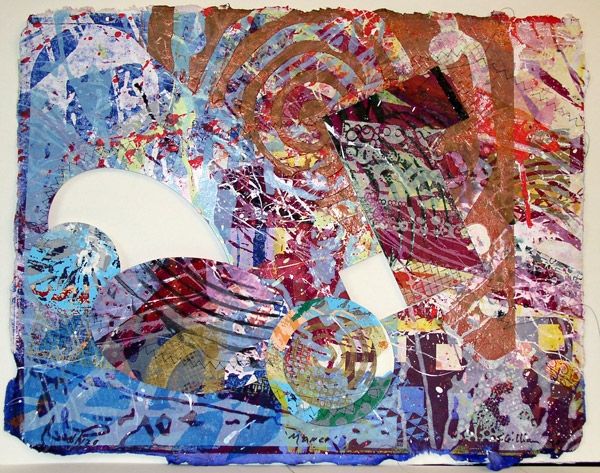
Dimensions: 213 x 213 cm
Copyright: Jo Baer,Fair Use
Editor: This mixed-media painting, "Prayer" by Jo Baer, was created in 1997. It's intensely layered and evokes a sense of somber reflection, even grief, with its skeletal figures and faded forms. How would you interpret this work, especially in relation to Baer's larger artistic trajectory? Curator: Considering Baer's prior engagement with minimalist abstraction, this painting signifies a significant shift towards figuration and narrative. Her earlier works were, in many ways, about institutional critique—questioning the framework of art itself. "Prayer" operates within a broader art historical context of the late 20th century, marked by postmodernism's challenge to established norms. We can view this turn to the figure, especially with motifs of mortality and vulnerability, as a reaction against the perceived detachment of earlier avant-garde movements. How does Baer employ these layered images to engage the viewer, beyond just visual appeal? Editor: The textual fragments embedded in the piece seem to act like whispers, directing the viewer towards specific readings but not dictating them entirely. Curator: Precisely. And it’s through those whispers – the poem fragments – combined with the juxtaposition of classical nudes, a skeleton, a burial, a stream, birds – the politics of imagery truly unfolds. It references classical traditions but does so through a contemporary, fragmented lens. How might those themes relate to societal concerns in the late 90s, when it was made? Editor: Maybe a pre-millennial angst? A fear of endings mixed with a reflection on past ideals and loss of purity? Curator: An interesting point! Seeing the painting as connected to such widespread cultural feelings certainly broadens its social impact. This work challenges our understanding of beauty, loss, and the stories we tell ourselves about both. It underscores the essential function art plays in processing difficult emotions and ideas in public dialogue. Editor: I didn’t see it that way at first, but you're right—it makes "Prayer" less like a personal lament and more like a cultural reflection. Thanks for helping me understand the political role of imagery!
Comments
No comments
Be the first to comment and join the conversation on the ultimate creative platform.

